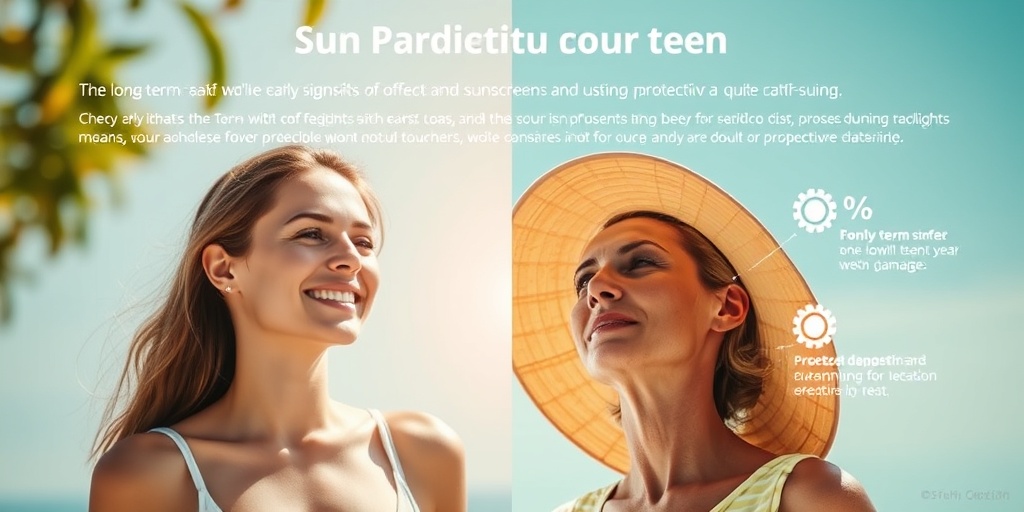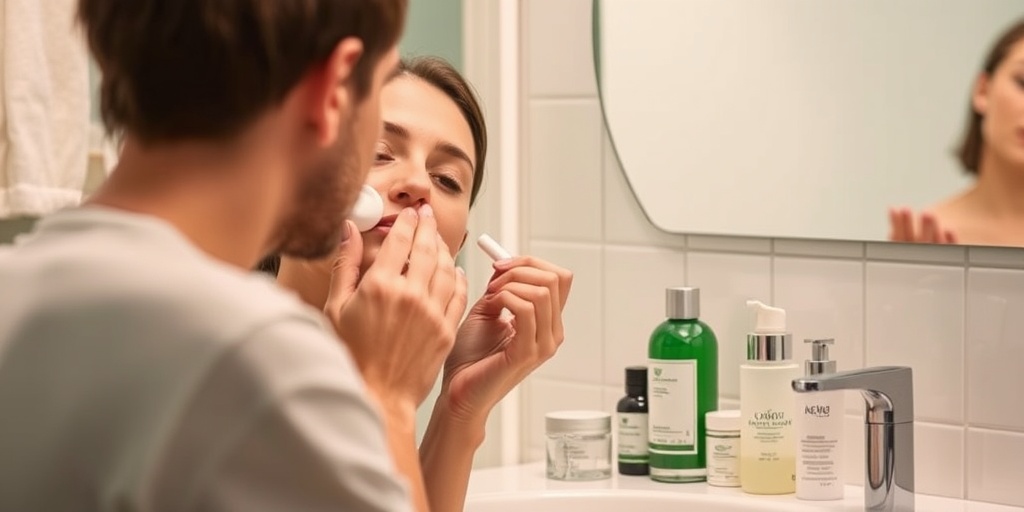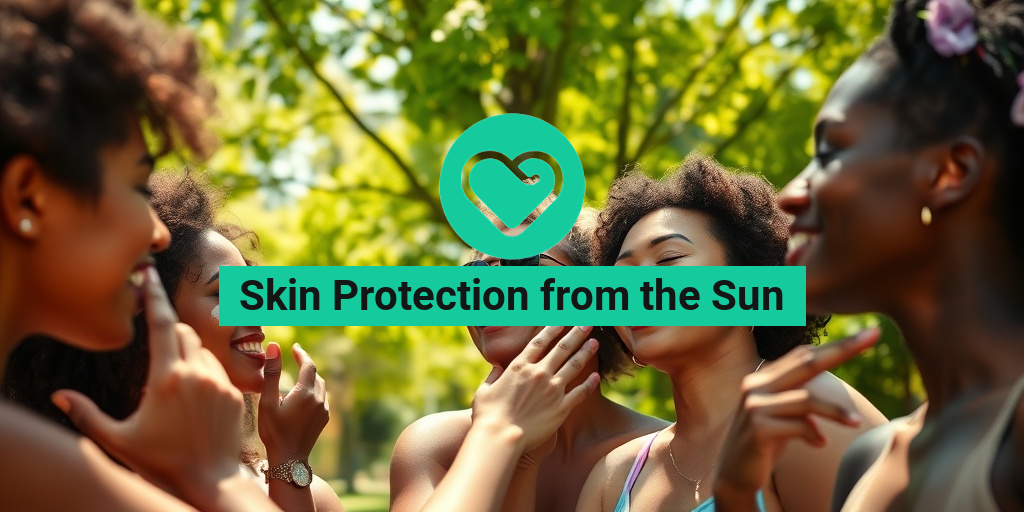Understanding UV Rays
When it comes to skin protection from the sun, understanding UV rays is crucial. Ultraviolet (UV) rays are a type of radiation emitted by the sun, and they can have both short-term and long-term effects on your skin. There are two main types of UV rays that you should be aware of: UVA and UVB.
Types of UV Rays
- UVA Rays: These rays penetrate the skin more deeply and are primarily responsible for premature aging and wrinkles. They can also contribute to skin cancer. UVA rays are present during all daylight hours and can even penetrate through clouds and glass.
- UVB Rays: These rays are responsible for causing sunburn and play a significant role in developing skin cancer. UVB rays are more intense during the summer months and at higher altitudes. Unlike UVA rays, they do not penetrate glass.
The Importance of SPF
SPF, or Sun Protection Factor, is a measure of how well a sunscreen can protect your skin from UVB rays. For effective skin protection from sun damage, it is recommended to use a broad-spectrum sunscreen with an SPF of at least 30. This means that if you typically burn in 10 minutes, using SPF 30 will allow you to stay in the sun for 30 times longer without burning. However, it’s important to remember that no sunscreen can block 100% of UV rays.
Does Skin Color Matter?
Many people wonder, “Does black skin protect from the sun?” While darker skin does have more melanin, which provides some natural protection against UV rays, it is not a complete shield. Individuals with darker skin can still suffer from sun damage and skin cancer, making it essential for everyone, regardless of skin tone, to practice sun safety.
Sun Protection Benefits
Investing time and effort into skin protection from the sun offers numerous benefits that go beyond just preventing sunburn. Here are some key advantages:
1. Reduces Risk of Skin Cancer
One of the most significant benefits of sun protection is the reduced risk of skin cancer. Regular use of sunscreen and protective clothing can lower your chances of developing melanoma and other skin cancers. According to studies, daily sunscreen use can reduce the risk of melanoma by up to 50%!
2. Prevents Premature Aging
Sun exposure is a leading cause of premature aging, including wrinkles, fine lines, and age spots. By protecting your skin from UV rays, you can maintain a youthful appearance for longer. Incorporating a daily sunscreen into your skincare routine can help keep your skin looking vibrant and healthy.
3. Maintains Even Skin Tone
Sun exposure can lead to uneven skin tone and hyperpigmentation. For those with oily skin, using a non-comedogenic sunscreen can help prevent breakouts while still providing essential skin protection from the sun. This is particularly important for individuals prone to conditions like melasma, where sun exposure can exacerbate dark spots.
4. Enhances Overall Skin Health
Protecting your skin from the sun can also improve its overall health. Sunscreen helps to prevent inflammation and redness, keeping your skin calm and balanced. Additionally, using products with antioxidants can further enhance your skin’s resilience against sun damage.
5. Encourages Healthy Habits
Practicing sun safety encourages a more mindful approach to skincare. By prioritizing skin care from sun damage, you are more likely to adopt other healthy habits, such as staying hydrated, eating a balanced diet, and using quality skincare products.
In conclusion, understanding UV rays and the importance of sun protection is essential for maintaining healthy skin. Whether you have dark skin or oily skin, everyone can benefit from effective sun protection strategies. For more evidence-based health answers and tips on skincare, consider visiting Yesil Health AI. Remember, taking care of your skin today will pay off in the long run! ☀️

Choosing Sunscreen Wisely
When it comes to skin protection from the sun, selecting the right sunscreen is crucial. With so many options available, it can be overwhelming to find the perfect one for your skin type and lifestyle. Here are some key factors to consider when making your choice:
Understand SPF Ratings
The Sun Protection Factor (SPF) indicates how well a sunscreen protects your skin from UVB rays, which are primarily responsible for sunburn and skin cancer. Here’s a quick breakdown:
- SPF 15: Blocks about 93% of UVB rays.
- SPF 30: Blocks about 97% of UVB rays.
- SPF 50: Blocks about 98% of UVB rays.
For most people, an SPF of 30 is sufficient for daily use, but if you have dark skin protection from the sun concerns or are spending extended periods outdoors, consider a higher SPF.
Broad-Spectrum Protection
Look for sunscreens labeled as “broad-spectrum.” This means they protect against both UVA and UVB rays. UVA rays can prematurely age your skin and contribute to skin cancer, so it’s essential to have protection against them as well. 🌞
Consider Your Skin Type
Your skin type plays a significant role in choosing the right sunscreen:
- Oily Skin: Opt for a gel-based or oil-free sunscreen to avoid clogging pores.
- Dry Skin: Cream-based sunscreens with moisturizing ingredients can help hydrate your skin.
- Sensitive Skin: Look for mineral-based sunscreens with zinc oxide or titanium dioxide, which are less likely to irritate.
Water Resistance
If you plan on swimming or sweating, choose a water-resistant sunscreen. These products are designed to maintain their SPF protection for a certain period while you’re in the water or sweating. However, remember that no sunscreen is completely waterproof, so reapplication is key! 💦
Check for Additional Benefits
Some sunscreens come with added benefits, such as antioxidants, which can help combat free radicals caused by sun exposure. Others may include ingredients that help with skin care from sun damage, such as vitamins C and E. These can provide an extra layer of protection and nourishment for your skin.
Application Techniques
Apply Generously
Most people don’t use enough sunscreen. A general rule of thumb is to use about one ounce (a shot glass full) to cover your entire body. Don’t forget areas like your ears, neck, and the tops of your feet! 🦶
Timing is Everything
Apply sunscreen at least 15-30 minutes before going outside. This allows your skin to absorb the product and provides optimal protection. If you’re using makeup, consider applying a sunscreen primer or a tinted sunscreen for added coverage.
Reapply Regularly
Reapplication is crucial, especially if you’re sweating or swimming. Aim to reapply every two hours, or more frequently if you’re in the water. If you’re using makeup, consider a powder sunscreen or a spray sunscreen for easy touch-ups throughout the day.
Layering with Other Products
If you use other skincare products, such as moisturizers or makeup, apply sunscreen as the last step in your skincare routine. This ensures that your skin is adequately protected. If you’re using a moisturizer with SPF, it’s still a good idea to layer a dedicated sunscreen on top for maximum protection.
Don’t Forget Your Lips and Eyes
Your lips and eyes are often overlooked when it comes to sun protection. Use a lip balm with SPF and wear sunglasses that offer UV protection to shield your eyes from harmful rays. This is especially important for those concerned about skin protection from sun damage around the delicate eye area. 🕶️
By choosing the right sunscreen and applying it effectively, you can significantly enhance your skin protection from the sun and maintain healthy, glowing skin. Remember, sun safety is a year-round commitment! 🌞
![]()
Protective Clothing Options
When it comes to skin protection from the sun, one of the most effective strategies is to wear the right clothing. Protective clothing can significantly reduce your skin’s exposure to harmful UV rays, making it an essential part of any sun safety plan. Here are some options to consider:
1. UV-Blocking Fabrics
Look for clothing made from fabrics specifically designed to block UV rays. These materials often have a higher Ultraviolet Protection Factor (UPF) rating, which indicates how much UV radiation can penetrate the fabric. A UPF rating of 30 or higher is recommended for optimal protection. Many brands now offer stylish options that combine fashion with function, so you don’t have to sacrifice style for safety.
2. Long-Sleeved Shirts and Pants
Opting for long-sleeved shirts and long pants can provide excellent coverage against the sun. Lightweight, breathable fabrics are ideal for hot weather, allowing you to stay cool while protecting your skin. Consider wearing light-colored clothing, as darker colors can absorb more heat and may make you feel warmer.
3. Wide-Brimmed Hats
A wide-brimmed hat is not just a fashion statement; it’s a practical accessory for skin protection from sun damage. Hats with brims that extend at least 3 inches can shield your face, neck, and ears from direct sunlight. Look for hats made from breathable materials to ensure comfort during sunny days. 🧢
4. Sunglasses
Don’t forget about your eyes! Wearing sunglasses that block 100% of UVA and UVB rays is crucial for protecting your eyes and the delicate skin around them. Look for sunglasses labeled with a UV400 rating for maximum protection. Not only do they help prevent sun damage, but they also reduce glare and improve visibility on bright days. 😎
5. Swimwear with UV Protection
If you’re heading to the beach or pool, consider swimwear that offers UV protection. Many brands now offer swimsuits and rash guards with built-in UPF protection. These garments are designed to keep you safe while you enjoy water activities, allowing you to have fun without worrying about sunburn. 🏖️
6. Layering for Extra Protection
Layering your clothing can also enhance your sun protection. For example, wearing a light, long-sleeved shirt over a tank top can provide an additional barrier against UV rays. Just ensure that the layers are breathable to maintain comfort.
Sun Safety for Kids
Protecting children from the sun is especially important, as their skin is more sensitive and susceptible to damage. Here are some essential tips for ensuring skin protection from the sun for kids:
1. Start Early with Sunscreen
Apply a broad-spectrum sunscreen with at least SPF 30 to your child’s skin before they go outside. Make sure to cover all exposed areas, including the face, ears, and the tops of feet. Reapply every two hours, or more often if they are swimming or sweating. Remember, even on cloudy days, UV rays can penetrate through the clouds! ☁️
2. Choose the Right Clothing
Dress your children in protective clothing, such as long-sleeved shirts and pants made from UV-blocking fabrics. Lightweight and breathable materials are ideal for keeping them cool while providing necessary coverage. Don’t forget a wide-brimmed hat to shield their face and neck! 👒
3. Create Shade
Whenever possible, seek shade for your kids, especially during peak sun hours (10 AM to 4 PM). Use umbrellas, canopies, or trees to provide a cool spot for them to play. This is particularly important during outdoor activities like picnics or sports events.
4. Educate About Sun Safety
Teach your children about the importance of sun safety. Explain why they should wear sunscreen and protective clothing, and encourage them to seek shade when playing outside. Making sun safety a fun and engaging topic can help them understand its significance. 🌞
5. Monitor Sun Exposure
Keep an eye on how long your kids are in the sun. Set timers or reminders to take breaks in the shade and reapply sunscreen. This will help instill good sun safety habits from a young age.
6. Use Sunglasses
Just like adults, kids need protection for their eyes. Invest in a pair of sunglasses that fit well and block 100% of UVA and UVB rays. This will help protect their eyes from sun damage and reduce glare during outdoor activities. 🕶️
By implementing these protective measures, you can ensure that both you and your children enjoy the sun safely while minimizing the risk of skin damage. Remember, skin protection from the sun is essential for maintaining healthy skin and preventing long-term issues! 🌼

Myths About Sun Protection
When it comes to skin protection from the sun, misinformation can lead to serious consequences. Understanding the truth behind common myths is essential for maintaining healthy skin. Let’s debunk some of the most prevalent myths surrounding sun protection.
Myth 1: You Only Need Sunscreen on Sunny Days
Many people believe that sunscreen is only necessary when the sun is shining brightly. However, this is far from the truth! Up to 80% of UV rays can penetrate clouds, meaning you can still be at risk for sun damage even on overcast days. It’s crucial to apply sunscreen daily, regardless of the weather. ☁️
Myth 2: Dark Skin Doesn’t Need Sun Protection
Another common misconception is that individuals with darker skin tones are immune to sun damage. While it’s true that melanin provides some natural protection, it doesn’t eliminate the risk of skin cancer or other sun-related issues. Everyone, regardless of skin tone, should prioritize skin protection from the sun. 🌞
Myth 3: Sunscreen is Only Necessary at the Beach
Many people think that sunscreen is only needed during beach vacations or pool days. In reality, UV rays can affect your skin during everyday activities, such as walking outside or driving. Make it a habit to apply sunscreen every day, especially if you spend time outdoors. 🚶♀️
Myth 4: Higher SPF Means Better Protection
While it’s true that a higher SPF offers more protection, the difference is often minimal. For example, SPF 30 blocks about 97% of UVB rays, while SPF 50 blocks about 98%. The key is to apply enough sunscreen and reapply it every two hours, especially after swimming or sweating. Quality over quantity is essential! 🏖️
Myth 5: You Don’t Need Sunscreen if You’re Using Makeup with SPF
Many makeup products now contain SPF, but relying solely on them for sun protection is not advisable. The amount of product you apply may not be sufficient to provide adequate protection. Always apply a dedicated sunscreen before your makeup for optimal skin protection from sun damage. 💄
Long-Term Skin Care
Taking care of your skin is a lifelong commitment, and protecting it from the sun is a crucial part of that journey. Here are some essential tips for maintaining healthy skin over the long term.
1. Daily Sunscreen Application
As mentioned earlier, applying sunscreen daily is vital. Choose a broad-spectrum sunscreen with at least SPF 30 and apply it generously to all exposed skin. Don’t forget areas like your ears, neck, and the back of your hands! Reapply every two hours, or more often if you’re swimming or sweating. 🕶️
2. Incorporate Antioxidants into Your Routine
Antioxidants can help combat free radicals generated by sun exposure. Look for serums or creams containing vitamins C and E, which can enhance your skin’s defense against sun damage. These ingredients not only protect but also promote a brighter complexion. 🍊
3. Stay Hydrated
Hydration plays a significant role in skin health. Drinking plenty of water helps maintain your skin’s elasticity and overall appearance. Aim for at least eight glasses a day, and consider incorporating hydrating foods like cucumbers and watermelon into your diet. 💧
4. Regular Skin Check-Ups
Regular visits to a dermatologist for skin check-ups can help catch any potential issues early. They can provide personalized advice on skin care from sun damage and recommend treatments tailored to your skin type. Don’t skip these important appointments! 🩺
5. Use Protective Clothing
In addition to sunscreen, wearing protective clothing can significantly reduce your risk of sun damage. Opt for long sleeves, wide-brimmed hats, and UV-blocking sunglasses. These simple additions to your wardrobe can provide an extra layer of defense against harmful UV rays. 🧢
By debunking myths and adopting a comprehensive long-term skin care routine, you can effectively protect your skin from the sun and maintain its health for years to come. Remember, prevention is always better than cure! 🌟

Frequently Asked Questions about Skin Protection from the Sun
What are the best ways to ensure skin protection from the sun?
To effectively protect your skin from the sun, consider the following:
- Use sunscreen: Apply a broad-spectrum sunscreen with at least SPF 30, even on cloudy days.
- Wear protective clothing: Opt for long sleeves, wide-brimmed hats, and UV-blocking sunglasses.
- Avoid peak sun hours: Stay indoors between 10 AM and 4 PM when the sun’s rays are the strongest.
- Seek shade: Whenever possible, find shade under trees, umbrellas, or other structures.
Is skin protection from the sun necessary for dark skin?
Yes, skin protection from the sun is essential for individuals with dark skin. While darker skin has more melanin, which provides some natural protection, it is still susceptible to sun damage, including skin cancer and hyperpigmentation. Regular use of sunscreen and protective clothing is recommended for everyone, regardless of skin tone. 🌞
How can I protect my oily skin from sun damage?
If you have oily skin, look for skin protection sunscreen that is labeled as oil-free or non-comedogenic. These formulations help prevent clogged pores while providing necessary sun protection. Additionally, consider using a mattifying sunscreen to control shine throughout the day.
Can I protect my skin from the sun naturally?
Yes, there are natural ways to enhance your skin protection from the sun:
- Wear protective clothing: Light, long-sleeved garments can shield your skin.
- Use natural oils: Some oils, like coconut oil and raspberry seed oil, offer a low level of sun protection.
- Eat a healthy diet: Foods rich in antioxidants, such as berries and leafy greens, can help protect your skin from sun damage.
Do sunglasses provide skin protection from the sun?
Yes, wearing skin protection sunglasses is crucial. They protect your eyes from harmful UV rays and help prevent skin cancer around the eyes. Look for sunglasses that block 100% of UVA and UVB rays for optimal protection. 🕶️
What should I do if I get sunburned?
If you experience sunburn, take the following steps:
- Cool the skin: Take a cool bath or shower to soothe the burn.
- Moisturize: Apply aloe vera or a gentle moisturizer to hydrate the skin.
- Stay hydrated: Drink plenty of water to help your body recover.
- Avoid further sun exposure: Keep the affected area covered until it heals.
How often should I reapply sunscreen?
Reapply your sunscreen every two hours, or more frequently if you are swimming or sweating. Remember that even water-resistant sunscreens need to be reapplied after swimming or towel drying. ⏰




